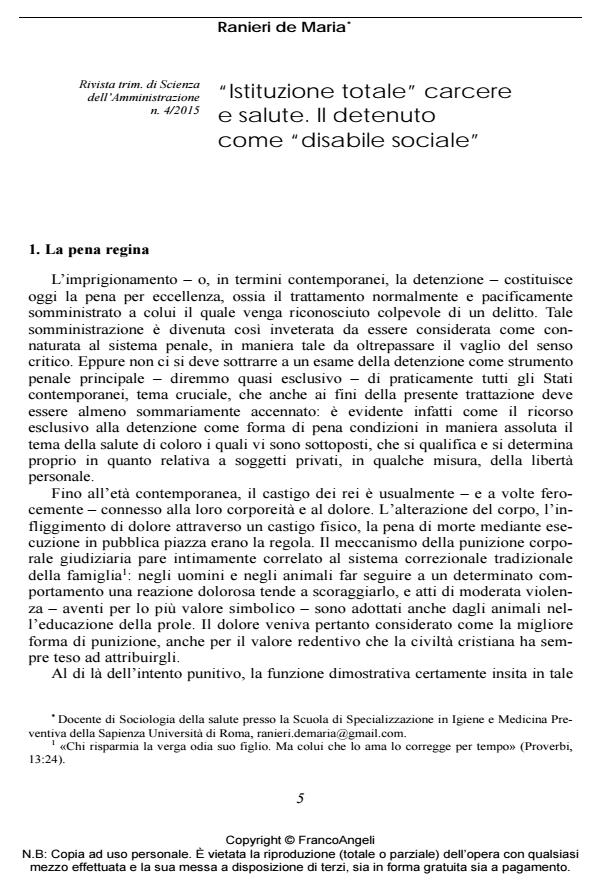"Total institution", Prison and Health. The Inmate as a "Social Disabled"
Journal title RIVISTA TRIMESTRALE DI SCIENZA DELL’AMMINISTRAZIONE
Author/s Ranieri de Maria
Publishing Year 2016 Issue 2015/4
Language Italian Pages 37 P. 5-41 File size 185 KB
DOI 10.3280/SA2015-004001
DOI is like a bar code for intellectual property: to have more infomation
click here
Below, you can see the article first page
If you want to buy this article in PDF format, you can do it, following the instructions to buy download credits

FrancoAngeli is member of Publishers International Linking Association, Inc (PILA), a not-for-profit association which run the CrossRef service enabling links to and from online scholarly content.
In contemporary legal systems, imprisonment is considered the principal form of punishment, if not the exclusive one. However, the way it is practiced in Italy, detention is unsuccessful in rehabilitating inmates. Instead, it is a willful expression of punishing an antisocial behavior with suffering, and this probably explains the lack of attention to health of inmates and prison overcrowding. By failing to rehabilitate, imprisonment cannot legitimize itself as a tool for correction, revealing what it is in actuality: a form of social exclusion carried out by total institutions. This implies that imprisonment weakens the physical and mental integrity of the prisoner, who then comes to be considered "socially disabled", that is, a person whose normal operating capacity has been impaired by structural factors, and not by physical disabilities; and whose health can't be treated by the conventional on-demand health system tools, but instead according to a model of healthcare initiative, which however does not seem likely to be implemented soon.
Keywords: Punishment, inmates, prison, health, social exclusion, social disability
Ranieri de Maria, "Istituzione totale" carcere e salute. Il detenuto come "disabile sociale" in "RIVISTA TRIMESTRALE DI SCIENZA DELL’AMMINISTRAZIONE" 4/2015, pp 5-41, DOI: 10.3280/SA2015-004001